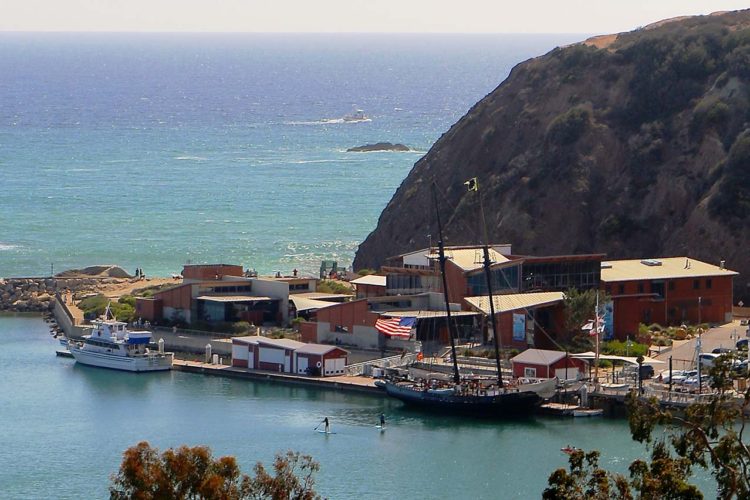Configure Now
Items in Your Cart0
0Items in Your Cart
Start building your packageShop Now
It's important to inspire the young generation to become marine scientists; perhaps using an oceanographic ROV will do just that. The future of the environment is in their hands. The Ocean Institute in Dana Point, CA knows this and is taking the initiative to encourage students to ask questions and be involved in the many fields of marine studies.
Today more than ever technology is changing the way that youth interact with the world around them. Enabling insight and education into areas unseen while promoting more potential learning opportunities than ever before. The subject of underwater education and ocean sciences have seen major changes with the help of Remote Operated Vehicles (ROVs).
With the introduction of these underwater robots, educators are finding better ways to connect in-class teachings to their real-world applications. These connections have demonstrated benefits in physical science and environmental stewardship for youth development.
Take a moment and learn how one organization is currently developing stewards of our oceans.

Founded in 1977, the Ocean Institute is a community-based, non-profit education organization; offering in-depth marine science, maritime history, and outdoor education programs to curious students of all ages ranging from Kindergarten to College. All programs are designed to maximize immersion, spark curiosity, and inspire a deep commitment to learning.
This state-of-the-art facility includes the latest in educational laboratories, the Maddie James Seaside Learning Center, two historic tall ships, and an oceanographic research vessel; which is outfitted with scientific equipment ready for deployment. Field trips aboard the research vessel range from one-hour science labs to multi-day programs in open water. All of the activities are intended to encourage engagement, spark curiosity, and inspire a deep commitment to learning.
Using the ocean as their classroom, the Ocean Institute inspires children to learn.

In the overnight and day programs titled, "Sea Floor Explorer", students from grades 4-6 become benthic scientists; immersing themselves in elaborate aquatic research activities that focus on coring/micropaleontology, underwater seismology, hydrothermal vent communities, and much more.
Students in the Sea Floor Explorer program have the opportunity to build their very own oceanographic ROV. Once assembled, they practice piloting their unit in the test tank on campus. Later, these eager learners head out to open water to survey the seafloor utilizing the Deep Trekker oceanographic Remotely Operated Vehicle.
"We have found spiny lobsters, angel sharks, and a multitude of other critters while exploring our harbor with the ROV," explains Leslie Kretschmar, Director of the At Sea Program at the Ocean Institute, "The students love scouring the bottom to see anything and everything they can encounter!"
Repairing and performing the upkeep of the unit became very expensive. Since the institute runs completely off of donations and fundraising efforts, finding the funds to keep up with the replacements became quite difficult.

Through their research efforts, the Ocean Institute took notice to the Deep Trekker DTG2 Remotely Operated Vehicle. Learning how affordable the entire system was, the underwater drone proved to be the ideal replacement.
The entire ROV fits conveniently into one portable carrying case; making it easy for transportation and deployment off their research vessel. This is made possible by the rechargeable Lithium-Ion batteries housed within the underwater drone; meaning there are no external power sources to bring along.
"I appreciate that the unit is battery operated because it requires less set up," expressed Kretschmar. "Our old ROV had a surface supply power box that was heavy and cumbersome." The Deep Trekker ROV is able to operate up to 8 hours on a single 90-minute charge.
When it came to traversing through the seaweed, the DTG2 ROV continued to prove capable of traversing these waters, with fewer areas for the seaweed to be entangled within the ROV. During the uncommon times where seaweed does prove challenging, the thruster motors have a smart sensor to stop movement so there is no risk of burning out the thrusters.
"...we are thrilled that we were able to purchase the Deep Trekker ROV..." - Leslie Kretschmar, Director of the At Sea Program at the Ocean Institute
A shift can be seen through improvements in education for youth in the realm of Science Technology Engineering and Math (STEM). An area that historically has had lower expectations for integrative and reflective learning than non-STEM faculties. These results may be attributed to a system which lacks opportunity to use ideas from outside sources. This encompasses diverse perspectives and opportunities to discuss ideas with fellow students.
Schools and educational bodies are aware of this gap and have started using ROVs to link classroom lessons to application. Underwater ROVs have been shown to complement in-class learning on STEM topics such as buoyancy and displacement. Allowing high school and university students to explore these concepts in a group setting where they can share learning and ideas.

With technology ever changing the marine research industry, the Ocean Institute aims to continue its partnership with Deep Trekker to keep up with the Next Generation Science Standards. Leslie Kretschmar explains, "...the customer service we have received has been exemplary. Questions have been fully addressed and answered in a timely manner. Every employee I have interacted with has seemed excited and proud of the products they supply."
Click here to find out more about the Sea Floor Explorer Program at the Ocean Institute >
July 30th, 2021
Learn all about remotely operated vehicle pilots: how to become one,...
October 31st, 2024
Learn more about what sonar is and its many uses. Read...
December 23rd, 2021
ROVs and sonar can be used to inspect underwater structures such...